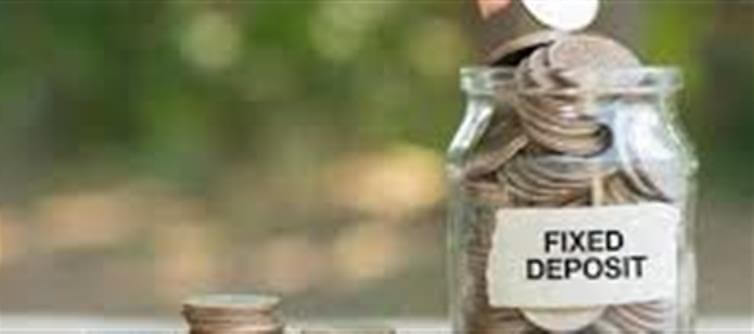
As interest rates on Fixed Deposits (FDs) continue to rise, senior citizens (aged 60 and above) are finding attractive opportunities to grow their savings. Some banks are offering interest rates of up to 8.4% on 5-year term FDs, with a maximum deposit of ₹3 crore. However, while these rates can seem enticing, potential investors should exercise caution before locking in their funds for a longer tenure. Here's a detailed look at the best FD rates, the offerings for senior citizens, and what to consider before making your investment.
1. Best FD Rates for Senior Citizens
For senior citizens, fixed deposits have traditionally been a go-to investment option because of their low-risk nature and steady returns. Currently, some banks are offering up to 8.4% interest on 5-year term FDs for senior citizens. This is a good rate, considering that interest rates for regular customers typically hover around 7.5% to 7.8% for similar tenures.
Top Banks Offering Up to 8.4% Interest Rates for Senior Citizens:
· Bank A: Offering 8.4% on a 5-year FD for senior citizens.
· Bank B: Offering 8.2% on a 5-year FD with an additional 0.5% rate hike for senior citizens.
· Bank C: Offering 8.1% on 5-year term FDs for seniors, along with a special bonus for new customers.
This higher rate is a way for banks to encourage seniors to invest in longer-term deposits while also benefiting from the security and predictability of FDs.
2. Factors to Consider Before Investing in High-Interest FDs
While the rates offered are competitive, there are a few important factors that senior citizens (and all FD investors) need to keep in mind before committing to an FD with such high interest rates:
a. Rate Fluctuations
Interest rates on FDs are subject to periodic changes based on market conditions, particularly the Reserve bank of India’s (RBI) monetary policy. While 8.4% might seem attractive today, it's crucial to keep in mind that long-term rates can change, which could affect new investments.
b. Penalty for Premature Withdrawal
If you need to withdraw your funds before the FD's maturity, you will face a penalty that typically reduces the effective interest rate. Some banks may charge 1% or more for premature withdrawals, which can significantly impact returns.
c. Impact of Taxation
Interest earned on FDs is taxable under the Income Tax Act, and this can eat into the returns, especially for higher interest rates. The tax rate for senior citizens is the same as for regular investors, though senior citizens can benefit from a higher exemption limit on interest income.
· TDS (Tax Deducted at Source) is deducted if the annual interest exceeds ₹40,000 (₹50,000 for senior citizens).
d. Reinvestment Risk
When the FD matures, you may not get the same rate of return upon reinvestment. Therefore, if interest rates decrease after your FD matures, you may find yourself reinvesting at a lower rate.
3. Other FD Features to Look for
When considering FDs, beyond the interest rate, check for the following features:
a. Flexible Payout Options
Some banks offer monthly, quarterly, or annual interest payouts, while others allow you to compound your interest for a higher return. Choose the payout option based on your financial needs.
b. Loan Against FD
If you ever need liquidity, certain banks allow you to take a loan against your FD, often up to 90% of the FD value. This provides a safety net for emergencies without having to prematurely break the FD.
4. What to watch Out for with High-Interest FDs
While 8.4% sounds great, it’s important to be cautious with some FD offerings that might come with hidden risks:
· Introductory Rates: Ensure that the rate is not an introductory offer that could change after a short period.
· Bank Stability: Make sure the bank offering these high rates is financially stable and offers good credit ratings (e.g., AAA rating). This is especially important when locking in large sums of money for several years.
· Penalties for Premature Withdrawal: As mentioned earlier, some banks impose harsh penalties for early withdrawals, which can limit flexibility.
5. Conclusion: Should You Invest in High-Interest FDs?
If you are a senior citizen looking for a stable, low-risk investment option with higher returns, these 8.4% FD rates can be very appealing. However, always weigh the risks of early withdrawal penalties, taxation, and market fluctuations before committing a large portion of your savings. Additionally, ensure you choose a reliable bank with good ratings to minimize risk.
The 5-year FD term is suitable for those looking to invest long-term, but flexibility and liquidity should always be factored into your decision-making.
Disclaimer:
The views and opinions expressed in this article are those of the author and do not necessarily reflect the official policy or position of any agency, organization, employer, or company. All information provided is for general informational purposes only. While every effort has been made to ensure accuracy, we make no representations or warranties of any kind, express or implied, about the completeness, reliability, or suitability of the information contained herein. Readers are advised to verify facts and seek professional advice where necessary. Any reliance placed on such information is strictly at the reader’s own risk..jpg)




 click and follow Indiaherald WhatsApp channel
click and follow Indiaherald WhatsApp channel